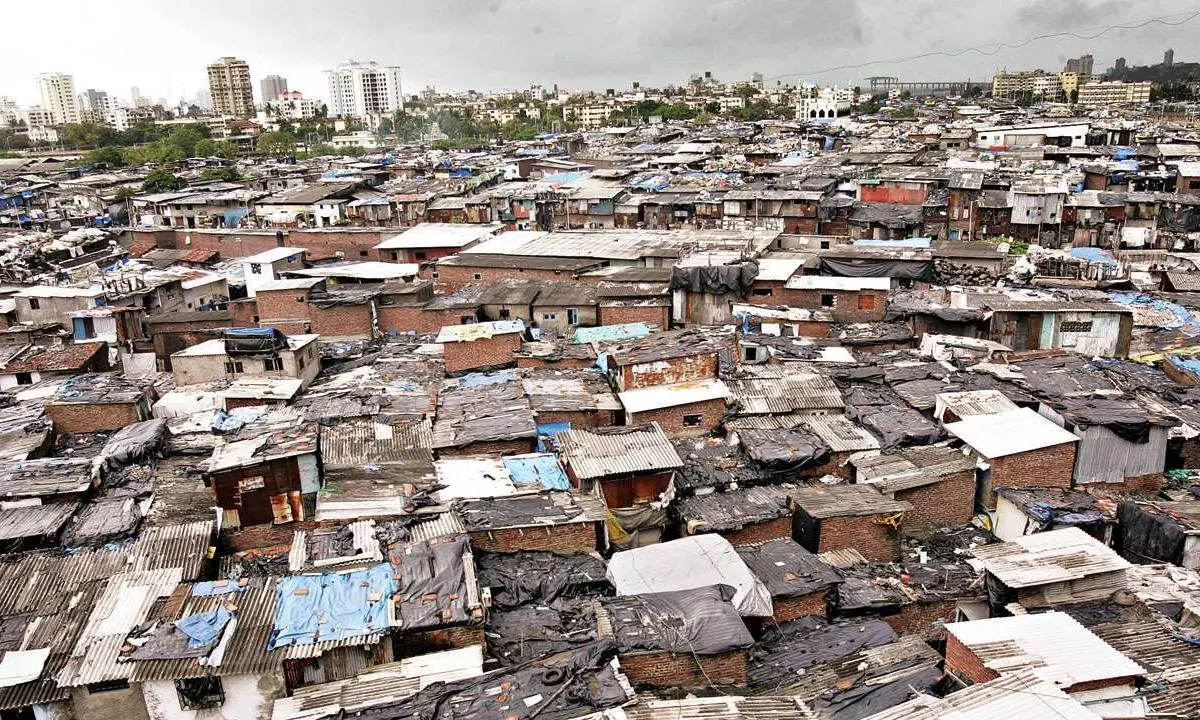
Hyderabad: A day before the Maharashtra Assembly election results, people in Dharavi are worried about their future. Asia’s largest slum Dharavi — often referred to as a city within Mumbai — is now facing major questions about its sustainability. A redevelopment project for Dharavi is being considered, but its execution is likely to depend on the outcome of the polls. Experts suggest that the future of the project hinges on which political party wins the electoral battle.
Dharavi’s small houses and one-room factories are now marked with red ink, signalling impending change even as the ‘Dharavi Bachao Andolan’ (Save Dharavi Movement) has gained momentum.
One of the protest organisers, Nilesh Kunchikorva, a daily wage labour, raises his critical concern, “How will our income continue if we are moved out of Dharavi? What will we eat? How will our children go to school and college?”
Ashim, a bread bakery owner, shares his fears with the Deccan Chronicle, “Will they demolish Dharavi with bulldozers? If that happens, we will lie down in front of the bulldozers.”
Dharavi, where thousands of huts covered with blue polythene stretch as far as the eye can see, is a striking sight from the nearby footbridge. Electricity and drinking water are available in this densely populated area, but proper drainage systems are nearly non-existent. Despite these challenges, approximately 10 lakh people live within a compact area of just three-square kilometres — which translates into one in every three square metres.
The area is a hub of small-scale industries, with over 12,000 one-room factories producing leather goods, garments, plastics, cardboard products, recycled materials, bread, sweets, and biscuits. Notably, most sweets and biscuits sold in Mumbai's small shops originate from Dharavi. These industries provide employment to at least 2.5 lakh workers, making Dharavi a critical part of Mumbai's economic ecosystem. People of all states — Uttar Pradesh to Tamil Nadu — come together in Dharavi as one piece of India.
In June 2022, Uddhav Thackeray’s Shiv Sena government collapsed, and the BJP-led alliance under Eknath Shinde and Devendra Fadnavis assumed power in Maharashtra. Within five months, the Dharavi Redevelopment Project was awarded to Gautam Adani's company, with 80 per cent of the project under Adani Corporation through a joint venture with the Maharashtra government.
Protests erupted when the project’s foundation stone was laid at RPF Maidan in September. Advocate Raju Korad of the ‘Dharavi Bachao Andolan’ called it a betrayal, reflecting residents' discontent over the redevelopment plan.
In the Dharavi Assembly, Eknath Shinde’s Shiv Sena candidate Rajesh Khander faces the Congress’ Jyoti Gaikwad of the Maha Vikas Aghadi (MVA). Uddhav Thackeray has pledged to cancel the Dharavi Redevelopment Project if the MVA returns to power.
The Congress candidate accused the Maharashtra government of allotting 1,500 acres of land to Adani for redeveloping 600 acres in Dharavi. She warned that residents would be relocated to salt marshes near the sea, endangering mangroves that protect Mumbai from floods.
The BJP and Eknath Shinder’s Shiv Sena dismissed these claims, assuring that the redevelopment will include roads, drainage, schools, hospitals, and spaces for small factories. They highlighted Dharavi’s proximity to the Bandra-Kurla Complex, a key commercial hub. Still, uncertainty looms for residents. “Where will we go?” asked Manoj, a Dharavi local, a day before the poll result.

